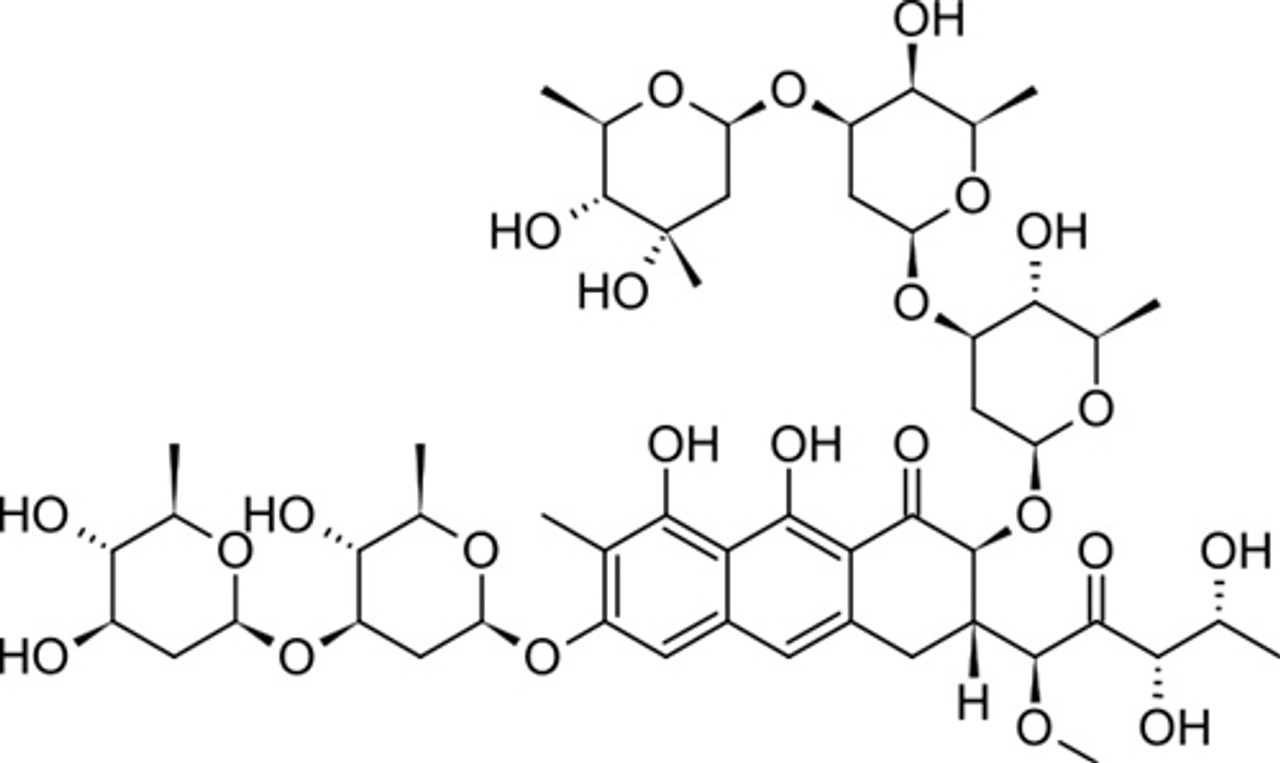
Mithramycin is a fascinating antibiotic with a rich history and a promising future. Originally discovered in the 1950s, this compound has been used to treat various cancers and hypercalcemia. But what exactly is Mithramycin? It’s a natural product derived from the bacterium Streptomyces argillaceus. Over the years, scientists have uncovered numerous facts about Mithramycin that highlight its potential in modern medicine. From its unique mechanism of action to its evolving role in cancer therapy, Mithramycin continues to captivate researchers and clinicians alike. Let’s dive into 20 intriguing facts about this remarkable antibiotic and its impact on health.
Key Takeaways:
- Mithramycin is a powerful antibiotic and anti-cancer agent derived from soil bacteria. It has shown effectiveness in treating testicular cancer, hypercalcemia, and Ewing's sarcoma, with potential applications in neurodegenerative diseases.
- Mithramycin works by binding to DNA, inhibiting gene transcription, and inducing apoptosis in cancer cells. Ongoing research explores new uses, derivatives, and combination therapies, while efforts focus on optimizing production and minimizing environmental impact.
What is Mithramycin?
Mithramycin is a potent antibiotic and anti-cancer agent. It has a fascinating history and a range of applications in medicine. Let's dive into some intriguing facts about this compound.
Origins and Discovery
Understanding where mithramycin comes from and how it was discovered can provide insight into its significance.
-
Mithramycin was first isolated in the 1950s from a soil bacterium called Streptomyces argillaceus. This discovery marked a significant advancement in antibiotic research.
-
The compound was initially named plicamycin. It was later renamed mithramycin to reflect its unique properties and origins.
Chemical Structure and Properties
The chemical makeup of mithramycin is complex and contributes to its effectiveness.
-
Mithramycin belongs to the aureolic acid family of antibiotics. These compounds are known for their ability to bind to DNA and inhibit transcription.
-
Its molecular formula is C52H76O24. This intricate structure allows it to interact with DNA in a specific manner.
-
Mithramycin is a polyketide antibiotic. Polyketides are a class of secondary metabolites produced by microorganisms, often with potent biological activities.
Medical Applications
Mithramycin has been used in various medical treatments, particularly in oncology.
-
It was initially used to treat testicular cancer. Mithramycin showed effectiveness in reducing tumor size and improving patient outcomes.
-
Mithramycin is also used to treat hypercalcemia. This condition, characterized by elevated calcium levels in the blood, can be life-threatening if not managed properly.
-
Research has shown potential in treating Ewing's sarcoma. This rare type of cancer affects bones and soft tissues, and mithramycin has demonstrated promising results in clinical trials.
Mechanism of Action
The way mithramycin works at the molecular level is crucial to its effectiveness.
-
Mithramycin binds to the minor groove of DNA. This binding inhibits the transcription of certain genes, particularly those involved in cell growth and proliferation.
-
It interferes with the binding of transcription factors. By preventing these proteins from attaching to DNA, mithramycin can halt the expression of genes that promote cancer cell growth.
-
Mithramycin induces apoptosis in cancer cells. Apoptosis is the process of programmed cell death, which is a desirable outcome in cancer treatment.
Side Effects and Risks
Like all potent drugs, mithramycin comes with its own set of side effects and risks.
-
Common side effects include nausea and vomiting. These symptoms can be managed with supportive care and medication.
-
Mithramycin can cause liver toxicity. Regular monitoring of liver function is essential during treatment to prevent severe complications.
-
It may lead to thrombocytopenia. This condition, characterized by low platelet counts, can increase the risk of bleeding.
Current Research and Developments
Ongoing studies continue to explore new uses and formulations of mithramycin.
-
Researchers are investigating its use in neurodegenerative diseases. Preliminary studies suggest that mithramycin may have protective effects on neurons.
-
New derivatives of mithramycin are being developed. These modified compounds aim to reduce side effects while maintaining or enhancing therapeutic efficacy.
-
Combination therapies involving mithramycin are under study. Combining mithramycin with other drugs may improve treatment outcomes for various cancers.
Environmental and Production Aspects
The production and environmental impact of mithramycin are also areas of interest.
-
Mithramycin production relies on fermentation. This process uses the natural capabilities of Streptomyces bacteria to produce the compound in large quantities.
-
Efforts are being made to optimize production methods. Advances in biotechnology aim to increase yield and reduce costs associated with mithramycin production.
-
Environmental impact is a consideration in production. Researchers are exploring sustainable practices to minimize the ecological footprint of mithramycin manufacturing.
The Final Word on Mithramycin
Mithramycin, a powerful antibiotic and anticancer agent, has a fascinating history and promising future. Discovered in the 1950s, this compound has shown effectiveness against various cancers, including testicular cancer and Ewing's sarcoma. Its ability to bind to DNA and inhibit transcription makes it a valuable tool in cancer treatment. However, its toxicity and side effects have limited its use, prompting researchers to develop derivatives with improved safety profiles.
Recent studies have explored mithramycin's potential in treating neurodegenerative diseases like Huntington's disease. Advances in drug delivery systems and combination therapies continue to enhance its therapeutic potential. While challenges remain, ongoing research and innovation hold promise for mithramycin's future applications.
Understanding mithramycin's history, mechanisms, and potential benefits can help us appreciate its role in modern medicine. Stay informed and keep an eye on future developments in this exciting field.
Frequently Asked Questions
Was this page helpful?
Our commitment to delivering trustworthy and engaging content is at the heart of what we do. Each fact on our site is contributed by real users like you, bringing a wealth of diverse insights and information. To ensure the highest standards of accuracy and reliability, our dedicated editors meticulously review each submission. This process guarantees that the facts we share are not only fascinating but also credible. Trust in our commitment to quality and authenticity as you explore and learn with us.
